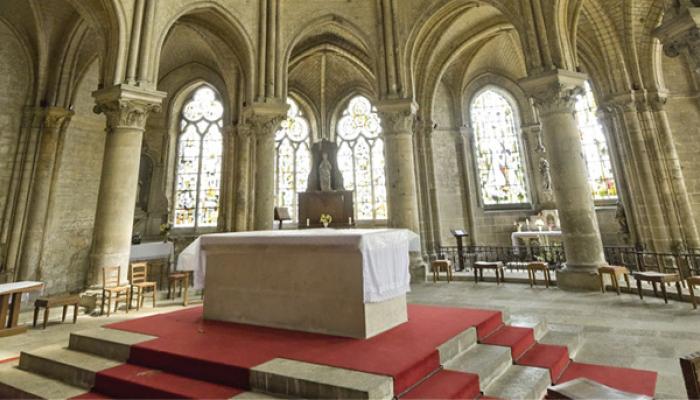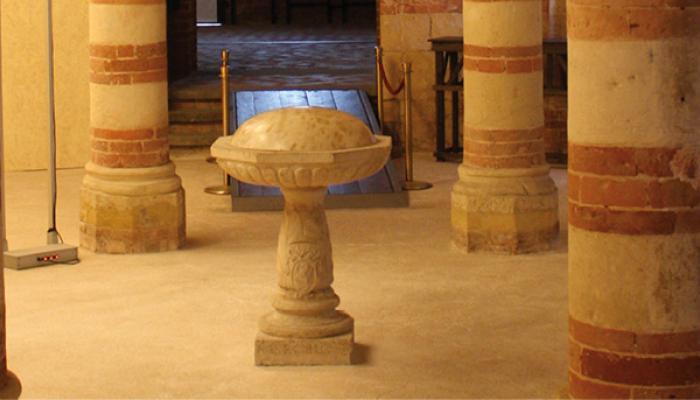
3.23 Qual è l’origine della Chiesa come edificio?
L’edificio della chiesa è pensato come il luogo in cui si raduna la comunità cristiana per pregare e celebrare la liturgia. I primi cristiani andavano alla sinagoga, l’edificio ebraico per la preghiera, per leggere la Scrittura (più tardi chiamata Bibbia) e per pregare. Più tardi avrebbero celebrato l’Eucaristia in case private (At 2, 46)At 2, 46 Ogni giorno erano perseveranti insieme nel tempio e, spezzando il pane nelle case, prendevano cibo con letizia e semplicità di cuore..
Presto queste case-chiesa furono riservate specificamente alla celebrazione dell’Eucaristia, e i cristiani non andarono più nelle sinagoghe. Anche se l’architettura cambiò nei secoli, la struttura generale dell’edificio della chiesa rimase lo stesso.
Does the Church need places in order to celebrate the liturgy?
The worship “in spirit and truth” (John 4:24) of the New Covenant is not tied exclusively to any place because Christ is the true temple of God. Through him Christians and the whole Church become temples of the living God by the action of the Holy Spirit. Nonetheless, the people of God in their earthly condition need places in which the community can gather to celebrate the liturgy. [CCCC 244]
What are sacred buildings?
They are the houses of God, a symbol of the Church that lives in that place as well as of the heavenly Jerusalem. Above all they are places of prayer in which the Church celebrates the Eucharist and worships Christ who is truly present in the tabernacle. [CCCC 245]
What is a Christian house of prayer?
A Christian house of prayer is both a sign of the ecclesial communion of people at a specific place and also a symbol of the heavenly dwellings that God has prepared for us all. In God’s house we gather together to pray in common or alone and to celebrate the sacraments, especially the Eucharist.
“It smells like heaven here.” “Here you can be very quiet and reverent.” Many churches surround us perceptibly in a thick atmosphere of prayer. We sense that God is present here. The beauty of church buildings directs our attention to the beauty, greatness, and love of God. Churches are not just stone messengers of the faith, but dwelling places of God, who is really and truly and substantially present in the sacrament of the altar. [Youcat 190]
The church building exists so that God's Word may be listened to, explained and understood by us; it exists so that God's Word may be active among us as a force that creates justice and love. It exists in particular so that in it the celebration in which God wants humanity to participate may begin, not only at the end of time but already today. It exists so that the knowledge of justice and goodness may be awakened within us, and there is no other source for knowing and strengthening this knowledge of justice and goodness other than the Word of God. It exists so that we may learn to live the joy of the Lord who is our strength. [Pope Benedict XVI, Homily, 10 Dec. 2006]





